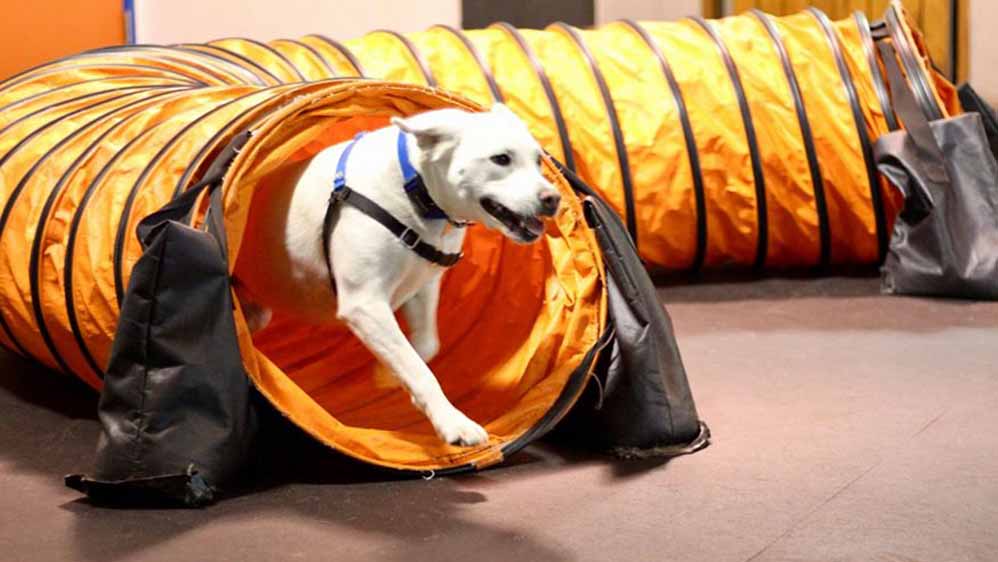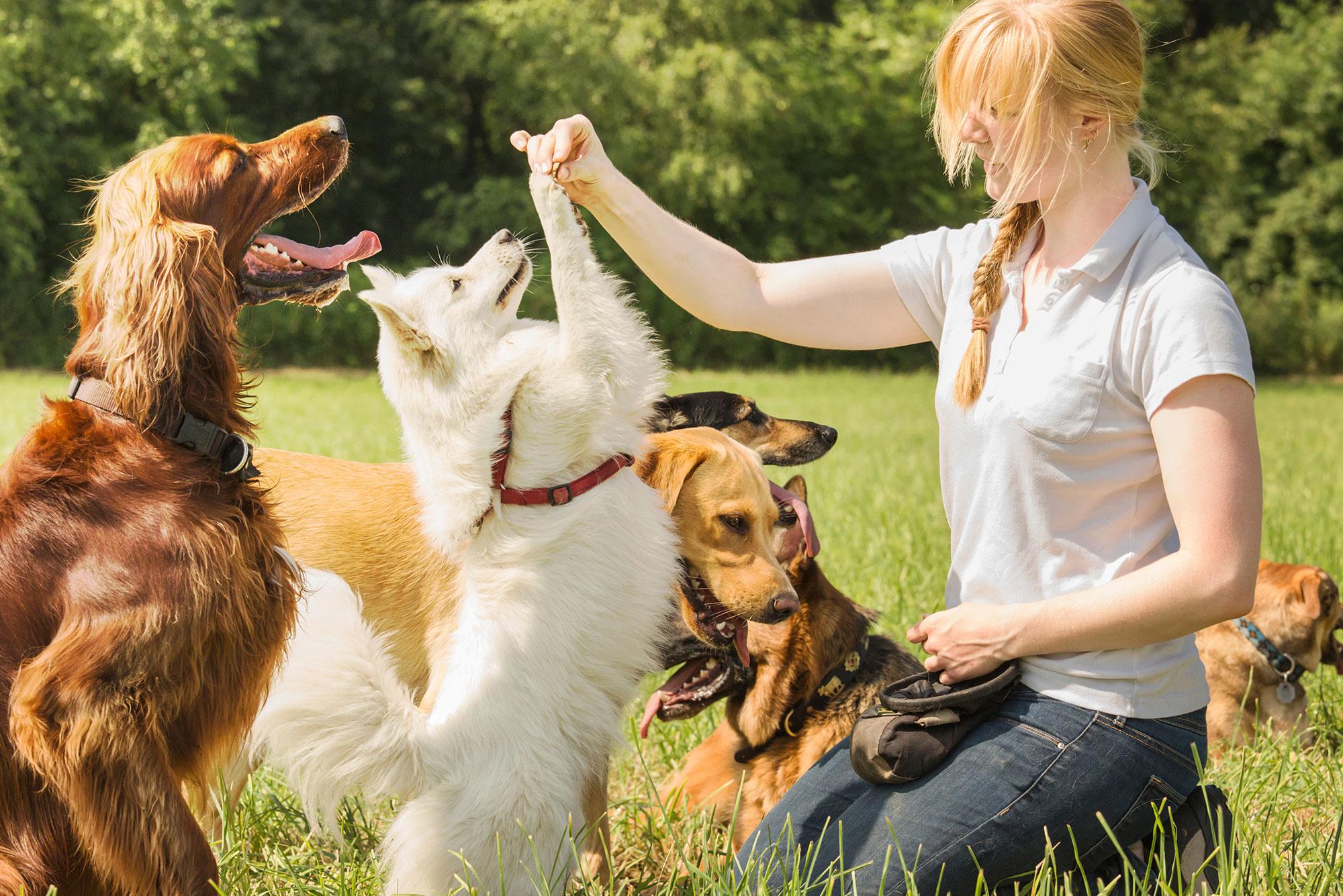Vital Tips for Effective Dog Training: A Guide for Pet Owners
Efficient pet dog training is a diverse process that requires a strategic strategy customized to both the pet dog's temperament and the owner's goals. Secret parts such as establishing consistent commands, using favorable support, and assisting in very early socializing play critical duties in promoting a well-adjusted canine friend. Nonetheless, lots of family pet owners encounter obstacles that can hinder progression, causing stress and unpredictability. Understanding exactly how to browse these barriers can considerably boost the training experience, ultimately transforming the partnership between proprietor and pet dog. What are the important approaches that can be utilized to guarantee success in this endeavor?
Understanding Dog Actions
Comprehending pet dog behavior is vital for effective training and fostering an unified relationship in between pooches and their proprietors. dog training. Pet dogs connect primarily with body language, vocalizations, and activities, making it essential for proprietors to analyze these signals precisely.

Socializing plays a substantial duty in dog actions; exposure to different environments, people, and other pets can substantially affect a dog's character. In addition, elements such as breed qualities and individual personality ought to direct training approaches, as some breeds might have details behavioral traits that demand tailored approaches. By comprehending these components, owners can produce a supportive environment that urges favorable behavior, leading to successful training results and a deeper bond with their pets.
Developing Regular Commands
Efficient communication with your dog begins with developing consistent commands. This fundamental element of training is vital for promoting understanding between you and your pet. Uniformity in the commands you make use of makes sure that your dog can reliably associate particular words or expressions with the wanted habits.
When selecting commands, choose clear, unique words that are simple to say and differentiate from one another. Stay clear of using similar-sounding commands that might confuse your dog. Utilizing "rest" and "remain" is suitable, however "rest" and "struck" can lead to misconceptions.
Additionally, maintain the very same tone and volume for each and every command. Pet dogs are delicate to vocal cues, so differing your tone can create complication.
It is similarly crucial to make certain that all relative get on the very same page relating to the commands utilized. A united front in command usage will avoid blended signals and strengthen the knowing process.
Favorable Reinforcement Techniques
The power of favorable support in pet training lies in its ability to motivate preferred habits with benefits and appreciation. This strategy is based in the principle that behaviors followed by desirable results are more probable to be duplicated. By including positive support right into your training program, you can successfully shape your pet dog's behavior in a positive way.
To carry out favorable support, it's important to identify what motivates your dog, whether it be deals with, playthings, or verbal praise. When your pet does a desired action, such as resting on command, instantly reward them with a reward or love. This association in between the command and the favorable end result enhances their understanding.
It's essential to timing the incentives correctly; supplying the support within seconds of the preferred actions helps your canine make the link (dog training). Furthermore, uniformity is key-- guarantee that all family participants make use of the same commands and benefit systems to stay clear of complication

Slowly, you can decrease the regularity of deals with as your dog learns the behavior, transitioning to commend or recurring incentives. This method not only promotes a solid bond between you and your pet but additionally advertises a positive discovering setting, making training a delightful experience for both.
Socialization and Communication
Regularly revealing your pet dog to a variety of settings, individuals, and various other pets is critical for their social growth. Socializing needs to begin early, ideally throughout the important home window of 3 to 14 weeks, when puppies are most receptive to new experiences. Older pet dogs can likewise benefit from ongoing socialization efforts.
Present your canine to different setups, such as parks, pet-friendly stores, and city locations. This exposure assists them adapt to various stimuli, minimizing anxiousness and worry reactions. Encourage favorable interactions with other pet dogs and individuals, ensuring that these experiences are secure and regulated to foster self-confidence.
Make use of organized playdates with well-mannered canines, as this can improve your dog's social skills More hints and educate them appropriate habits. Obedience courses and training sessions likewise supply excellent possibilities for socializing, enabling your pet dog to interact with others in a supervised setting.
Display your canine's body language throughout interactions, as this will assist you assess their convenience degree. Gradually enhance exposure to even more tough situations while making certain that each experience is favorable. A well-socialized canine is a lot more most likely to display balanced actions, making them a joy to have in any type of setting.
Dealing With Common Training Difficulties
Every canine proprietor will run into training difficulties at some time, no matter of their canine's age or socialization level. Recognizing common issues such as stubbornness, interruptions, and terror can assist in establishing efficient techniques for enhancement.

Distractions during training sessions can thwart focus. To battle this, begin training in a peaceful setting with marginal stimuli. Slowly present distractions as the dog comes to be more competent in commands. Short, regular training sessions are also efficient in preserving interest.
Fearfulness can hinder a dog's knowing process. Gradual desensitization to the source of worry, coupled with positive reinforcement, can aid ease stress and anxiety. Patience is critical; never require a canine into a scenario that triggers distress, as this might aggravate the concern.
Eventually, understanding and addressing these common challenges with a structured approach will certainly foster a more efficient training experience, strengthening the bond in between dog and owner while advertising effective understanding.
Conclusion
In recap, successful canine training counts on an extensive understanding of canine behavior, the facility of constant commands, and the application of positive reinforcement methods. Socializing plays an essential role in developing well-adjusted animals, while dealing with usual training obstacles calls for patience and adaptability. By executing these necessary methods, pet dog proprietors can foster a solid bond with their pets and advertise preferable actions, inevitably leading to a harmonious partnership between human beings and their canine buddies.
Understanding canine actions is vital for effective training and promoting a harmonious relationship between dogs and their proprietors.Socialization plays a considerable role in pet habits; direct exposure to different atmospheres, people, and various other animals can significantly influence a dog's character.The power of positive support in pet training lies in its capability to motivate desired behaviors with rewards and appreciation. By integrating positive reinforcement right into your training routine, you can effectively form your pet's behavior in a useful way.
In recap, successful canine training relies on a thorough understanding of canine behavior, the establishment of consistent commands, and the application of positive check my reference support techniques.